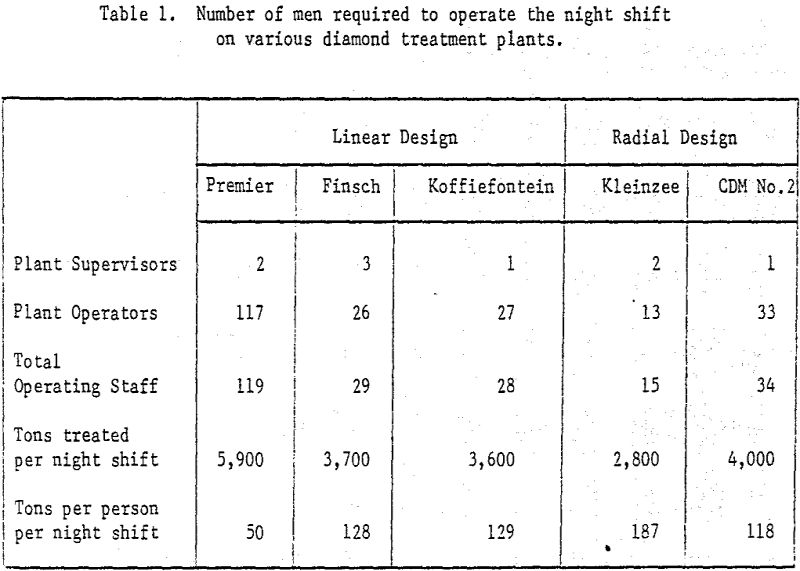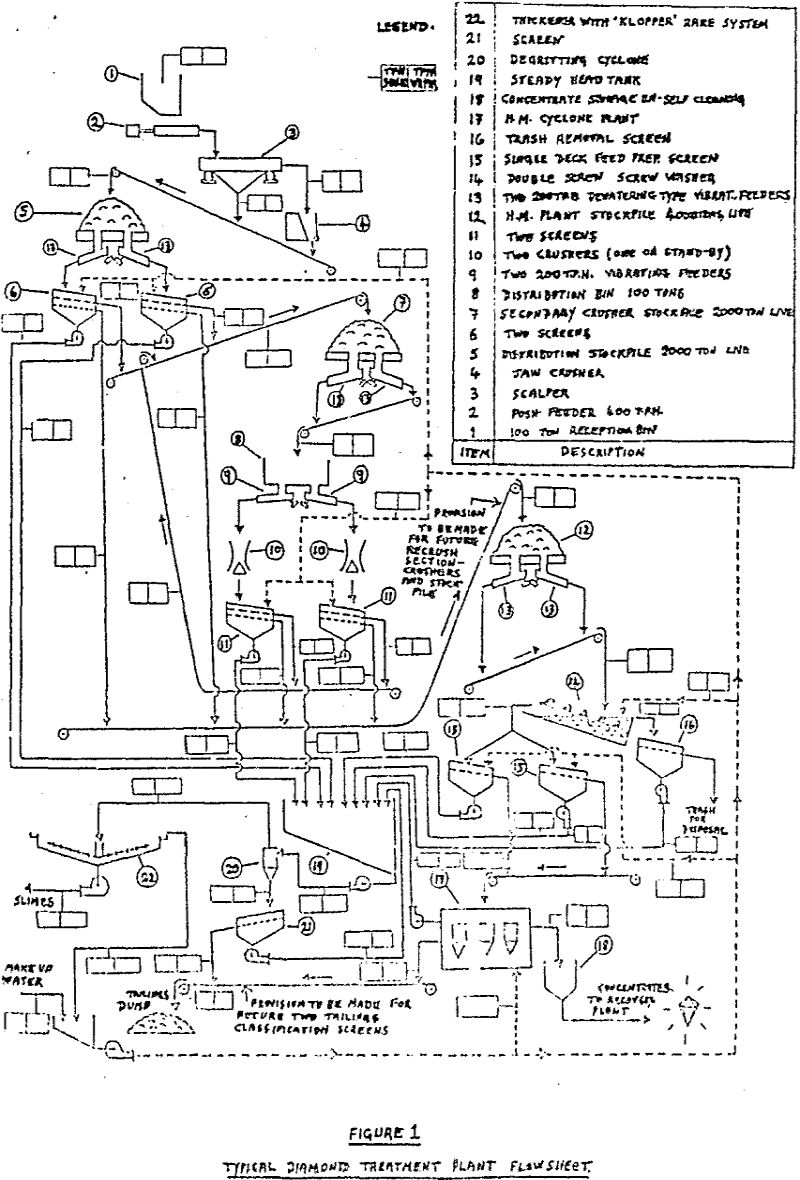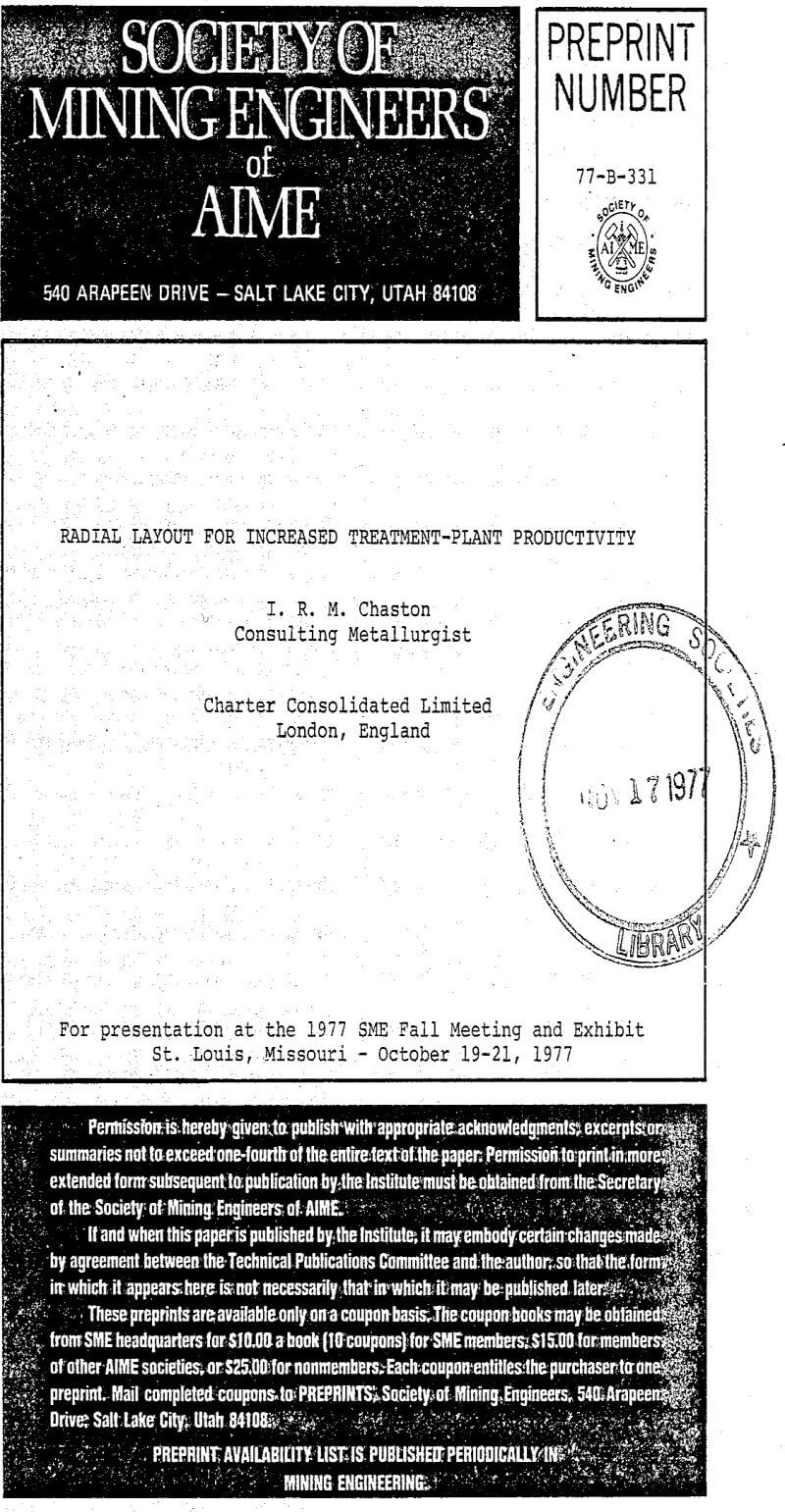Table of Contents
The radial system simplifies and improves control and supervision to a very considerable extent and can lead to a form of continuous plant operation with the separate sectors shutting down in succession for necessary maintenance while maintaining the overall plant operation.
Radial Layout for Increased Treatment-Plant Productivity
A great deal of time and trouble is spent by highly qualified and experienced metallurgists in developing the right treatment process for a given ore. This process is then often expressed in a treatment flowsheet. This flowsheet, when completed, is commonly handed over to the mechanical engineers who then design the layout of the equipment indicated on the flowsheet and produce the working drawings upon which the detailed construction of the treatment plant will be based. It is an unfortunate fact that the tedious and time-consuming juggling of equipment and inter-plant transportation is often left to hard working draughtsmen who, however capable in their field, lack practical experience in the day-to-day operation and maintenance of the treatment plants they design. As a result many plants have been produced which, while they satisfy the requirements of the flowsheet with minimum capital requirements, cost far more than should be necessary to operate and maintain.
Mill Siting
It is now rare for treatment plants to be built on steeply sloping sites. Even a century ago the disadvantages of such sites were well recognised i.e. that the foundations required considerable excavation and the building of retaining walls, that men found it difficult to move about inside the mill or to approach it for maintenance from the outside; and extensions were difficult to fit into the basic structure. Such plants were often built on steep hillsides so that dumping space for tailings could be provided on flat areas below the mill and also to avoid the use of elevators which wear out rapidly and annoy the mill men by breaking down.
Today, level sites are customary. This does not represent any change in what the manufacturers probably consider is an unreasonable prejudice on the part of mill men against elevators but follows from the universal acceptance of belt conveyors for elevating dry material in mills and an improvement in the reliability, if not the mechanical efficiency, of pumps for elevating slurry. The disadvantage of the belt conveyor is that it is limited in the angle up which it is possible to carry ore, particularly when wet, and it is customary to limit this angle at the design stage to 15° or less.
Intermediate Storage
The advantages of intermediate storage have usually been discussed with reference to unforeseen breakdowns in the treatment plant circuits, to the handling of an intermittent supply of ore from the mine shaft or as a means of restricting operation of the primary crushers to one of two shifts.
The use of twin reclaiming conveyors in tunnels under such conical stockpiles can greatly reduce the amount of dead ore in a stockpile if this is a problem. In addition ore can be dozed to and fro between the pile and adjacent storage areas to give an almost open-ended capacity which can be very useful when repairs or delays take longer than forecast.
Radial Plants
The primary crusher can be incorporated into the main-block if this is required but more often this will not be so. The trend today is for the primary crusher to vanish back into the mine or open pit and for it to be run by the mining department. This has a useful restraining effect on the miners tendency to deliver giant, oversize rock masses balanced precariously on their outsize trucks to the plant and is there-fore a trend to be encouraged.
In such instances the primary crusher product will be fed, usually by conveyor, to an initial crushed-ore stockpile which should preferably have sufficient live capacity to provide up to 24 hours operation of the main treatment plant. In addition an open area should be provided next to the stockpile so that an additional quantity of ore can be dozed away from the primary stockpile in the event that several days stoppage of the mining operation or of the primary crusher is envisaged.
This reclaim conveyor will feed to the secondary crushers installed in the central treatment block, the hub of the radial system. The oversize product of the secondary crushers may feed out by conveyor to a second stockpile so that this crushing section can be isolated from the tertiary crushing stage which will provide the fine ore for storage on a fine-ore stockpile. This intermediate ore stockpile is found to be very useful in optimising the feed to the tertiary crushers. The tertiary crusher feed might otherwise fluctuate within wide limits over short periods with changes in the crushing characteristics of the primary ore.
Where this primary treatment is of coarse material as in the diamond-recovery industry, it is found useful to convey the product from the first stage of treatment out to another stockpile.
In the plant; screening, secondary crushing, scrubbing and recrush-crushers have been collected together in the western block which is connected by a control bridge to the eastern block containing the heavy media treatment equipment. The crushed, scrubbed and desanded product is sent by conveyor from the crushing block to a 500 ton storage bin in the south which incorporates second-stage desanding screens. Product from these screens is conveyed back to the top of the heavy media section. Tailings from the heavy media are conveyed to the north of the plant to a tailings screening section which delivers oversize to an open recrush stockpile.



